BY ROBERT MILES
“What began only as a dream a little more than twelve years ago is now Chet and Nancy Long’s very special gold-finding retirement lifestyle.”
Retirement and finding that elusive gold is what Chet and Nancy Long have been working and saving toward for well over a decade. And while many people may have no idea of what they’ll do when retirement finally rolls around, these two new retirees are doing exactly what they enjoy the most…gold mining and nugget hunting together.
They both smile a lot, and you can tell they like what they’re doing. And they’re good at it, too, with Chet having found over 206 gold nuggets in a single two-month period, using a metal detector and working a desert area just outside of Yuma, Arizona. “My dad,” Chet recalls, “has always had a metal detector, and he’s the one that got me started. We’ve always read a lot of stories about people finding gold and relics, and I guess we just figured we could do it, too. At first it was really hard going, and I even wondered if I’d ever find a nugget, but now I know it’s there and anyone who’ll persist and take the time to learn a bit can find them. In fact, in just one day I managed to take 40 different pieces.”
And if anyone happens to be talking about gold mining and Chet and Nancy are nearby, you can be sure they’ll be listening. “We’ve learned a lot about mining and prospecting from a lot of great people,” says Nancy, who’s got a thirst for adventure and a smile as big and warm as a home-baked apple pie. “So much of the fun of finding gold, or at least the way we’ve done it, is meeting the other miners. We all help each other locate the gold, because most people who are into good gold love to share their experience.”
Today their home is where the gold is, but it wasn’t always that way. Before they retired Nancy was an editorial typist for the Air Force Test Pilot program, and Chet was a civilian electronics technician, working on America’s Space program at Edwards Air Force Base in Arizona.
“I got him a dry washer for a wedding present,” Nancy recalls. “Chet had gotten the gold bug after studying geology and anthropology at the college in Antelope Valley, and as soon as we started getting out into the desert and finding a little color, that was it, and we were from that moment on just destined to be gold miners and prospectors.
“Then listening to people tell how much fun it was to actually dredge for gold in the creeks got us into buying our first 2-inch dredge. It didn’t take us long to really get hooked on that because we found a real nice nugget on our very first trip. After that we would go up to the creek on the weekends and holidays, and Chet would start the holes, and then I’d get in the water with a snorkel and push them as deep as we could go. It was great; we really had a ball doing that for the next five or six years.” About this time we started dreaming of getting a new five-inch dredge, and then when we finally got it, we took it up to Piru Creek where the water, in a lot of the good spots, is only 2 to 6 inches deep. We had to dredge a hole with our 2-inch dredge to put our new five-incher in. Then we’d use the tailings to make a pool to get it floating; it was great fun and we found some really nice gold.”
These days Chet and Nancy make their home pretty much wherever the gold trail takes them. As lovers of the great outdoors, their 24-foot 5th wheel trailer and four-wheel-drive truck make perfect partners in their gold mining ventures. “We didn’t always have the RV,” Chet recalls, “and for years we’d get off work at four o’clock on Friday night, head out, and not return until late Sunday night. Nancy would cook on the tailgate of the truck, and I’d kid her about how I take her out to eat more often than any four other people.”
To Chet and Nancy, finding gold has far more meaning than just the value of the gold itself. It is the thrill of finding it and sharing the excitement and pleasure with their friends. “Whenever we’d come back from a weekend gold hunting trip, on Monday all the people back at work would gather round and say, ‘Okay, show us the gold.’ We’d be so excited, and they just couldn’t believe we’d work so hard just to find that little bit of gold that was in the jar, but we were. And of course if you’re a miner you’d understand.”
Now that they’re retired, each new day holds a promise for Nancy and Chet Long an opportunity to live the life they’ve worked so long and hard to have. From their home in Yuma, Chet is able to make frequent trips out into his favorite nuggets hotspots, many with his dad, Chester Long, Sr., who’s now 88 years old and still finding his share of that elusive gold.
Whether metal detecting, dredging, (Dry-washing) dry washing, or just shooting the breeze about a good gold location, they’re living the kind of life that many only dream about. And to those of us who can feel adventure calling, Chet and Nancy Long are the first to say, “Come on, lets go…there’s gold out there.”
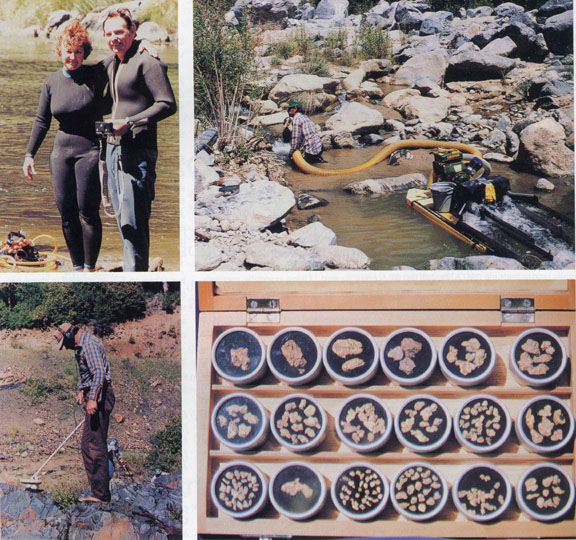


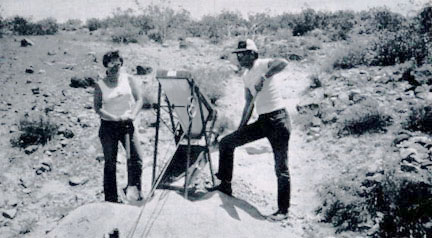
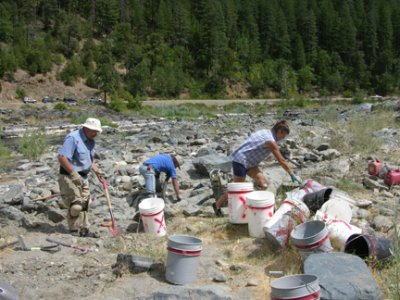
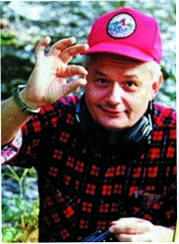 Four hours of
Four hours of 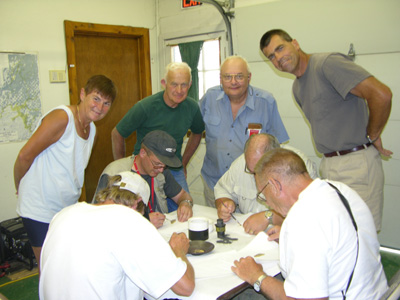 During the first week, Henry learned how to really use his metal detector for
During the first week, Henry learned how to really use his metal detector for 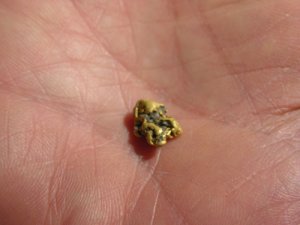
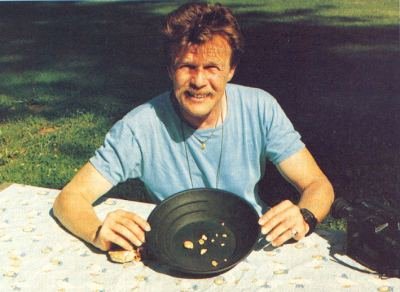 The memory is still very clear. When I was a kid about 9 years old, we played Cowboys and Indians in the ruins of bombed-out Hamburg in postwar Germany. We kids consumed the mandatory literature about Billy the Kid, the Lone Ranger, and the exploring of America’s Wild West. Sometimes we read with a flashlight under the bedspread, reading until deep into the night.
The memory is still very clear. When I was a kid about 9 years old, we played Cowboys and Indians in the ruins of bombed-out Hamburg in postwar Germany. We kids consumed the mandatory literature about Billy the Kid, the Lone Ranger, and the exploring of America’s Wild West. Sometimes we read with a flashlight under the bedspread, reading until deep into the night.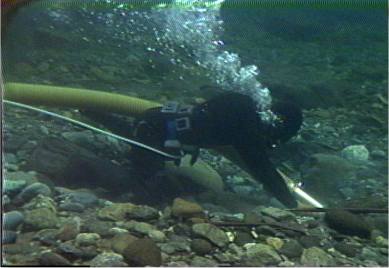
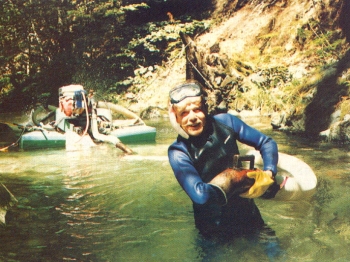 My first mining experience was a bad one. Everywhere I went along the rivers and creeks, I saw huge signs with KEEP OUT, ACTIVE MINING CLAIM. After two days of looking, I ended up along the old Steese Highway some 30 miles out of Fairbanks, working the tailings of one of the old bucket-line dredges they used in the past. The outside temperature was 75 degrees by the end of June; but when I put my hands into the water -brrr – I pulled them out and checked for frostbite. The water temperature was barely above the freezing point, and it took all the fun out of the gold mining.
My first mining experience was a bad one. Everywhere I went along the rivers and creeks, I saw huge signs with KEEP OUT, ACTIVE MINING CLAIM. After two days of looking, I ended up along the old Steese Highway some 30 miles out of Fairbanks, working the tailings of one of the old bucket-line dredges they used in the past. The outside temperature was 75 degrees by the end of June; but when I put my hands into the water -brrr – I pulled them out and checked for frostbite. The water temperature was barely above the freezing point, and it took all the fun out of the gold mining.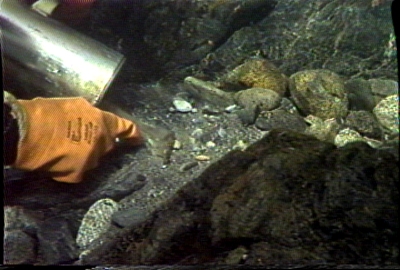 When I went back to Germany (I had run out of cash), I decided to become a belt-maker. For the next five years, I worked in Spain on the lovely island of Ibiza, making and selling my designer-belts with great success. In 1987, I tired and retired. I had enough funds to be on the road again for the rest of my life and could do whatever I wanted.
When I went back to Germany (I had run out of cash), I decided to become a belt-maker. For the next five years, I worked in Spain on the lovely island of Ibiza, making and selling my designer-belts with great success. In 1987, I tired and retired. I had enough funds to be on the road again for the rest of my life and could do whatever I wanted.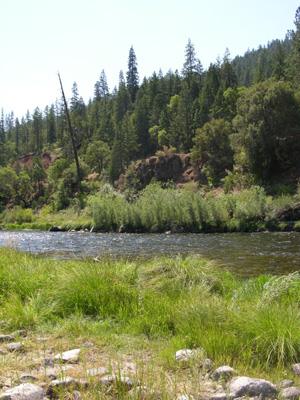 Because of my busted eardrum, deep diving was out of the question. I could only
Because of my busted eardrum, deep diving was out of the question. I could only 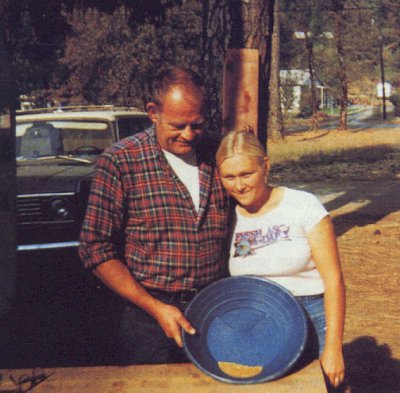
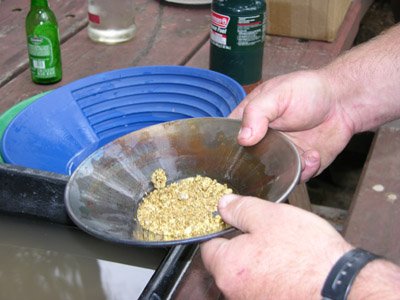
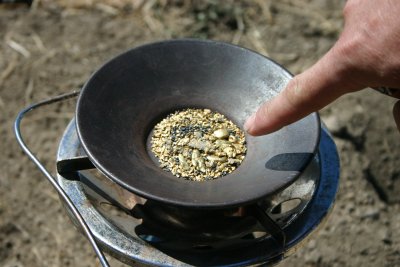
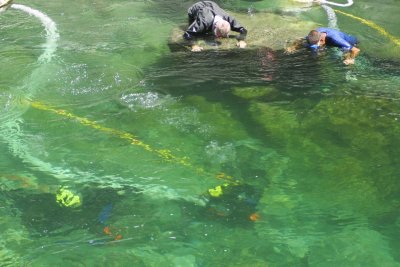
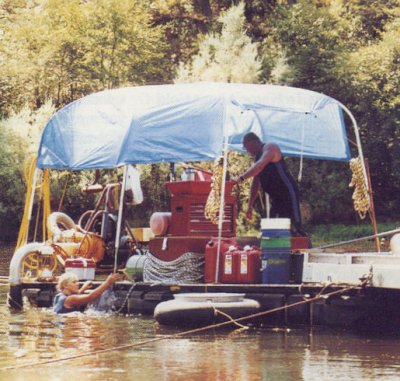 That was nearly ten years ago, and today Dan and Verna consider themselves to be some of the luckiest people in the world. Lucky because they have each other, share a love for the beauty of the great outdoors. They also have the greatest job in the world… looking for and finding gold. “Now that’s not to say that we don’t get disgusted and even a little depressed now and then,” says Verna. “We’ve even considered making our living in some other way. In fact, one time we sold our trailer and even our dredge and bought a house. But the minute that sun started shining, we just couldn’t stand it. We sold the house and bought our 34-foot travel trailer and a new dredge and headed out for the gold and the river. When you come right down to it, there’s just something about professional mining and getting into the gold that makes all the hard work worth it.”
That was nearly ten years ago, and today Dan and Verna consider themselves to be some of the luckiest people in the world. Lucky because they have each other, share a love for the beauty of the great outdoors. They also have the greatest job in the world… looking for and finding gold. “Now that’s not to say that we don’t get disgusted and even a little depressed now and then,” says Verna. “We’ve even considered making our living in some other way. In fact, one time we sold our trailer and even our dredge and bought a house. But the minute that sun started shining, we just couldn’t stand it. We sold the house and bought our 34-foot travel trailer and a new dredge and headed out for the gold and the river. When you come right down to it, there’s just something about professional mining and getting into the gold that makes all the hard work worth it.”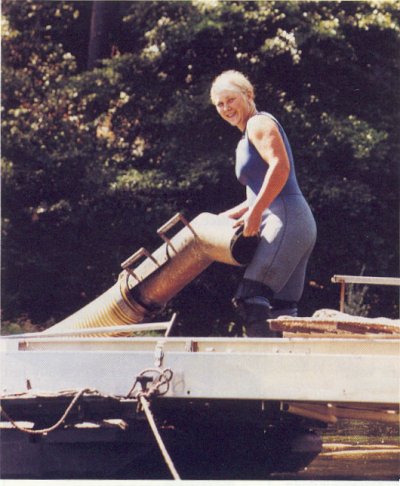 Verna is a firm believer in the equality of the sexes as far as gold mining is concerned. She gets a real big kick out of taking her turn at running the nozzle on their eight-inch Pro-Mack dredge. “You know, it’s amazing how many miners’ wives and girl friends I’ve turned on to the fun and adventure of actually getting under the water where the action is. At first, they often seem reserved or even a little taken aback, but boy do most of them have fun once they actually suit up and try it.”
Verna is a firm believer in the equality of the sexes as far as gold mining is concerned. She gets a real big kick out of taking her turn at running the nozzle on their eight-inch Pro-Mack dredge. “You know, it’s amazing how many miners’ wives and girl friends I’ve turned on to the fun and adventure of actually getting under the water where the action is. At first, they often seem reserved or even a little taken aback, but boy do most of them have fun once they actually suit up and try it.”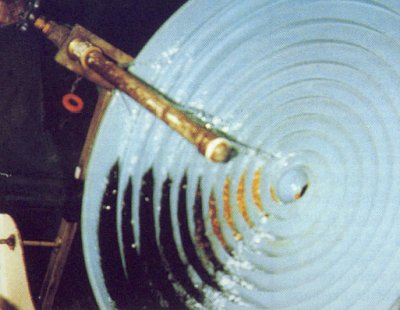
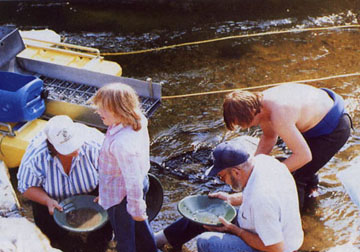
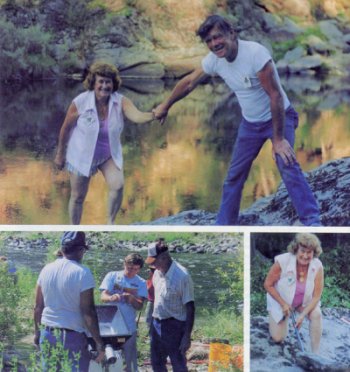 When she was a girl, Joy Cole’s dad took her along on his
When she was a girl, Joy Cole’s dad took her along on his 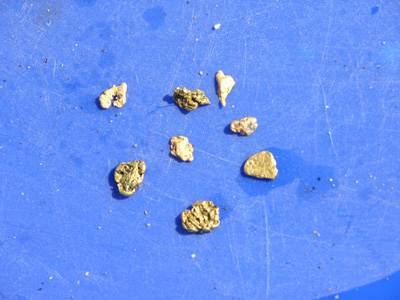 Joy, a petite, pretty gal with sparkling eyes, believes there’s more to it than that. She gets hunches. Maybe it has something to do with the close touch she’s had with the land, the love of it formed in those years she spent prowling and exploring with her father. She doesn’t apologize for respecting those feelings we can’t always explain.
Joy, a petite, pretty gal with sparkling eyes, believes there’s more to it than that. She gets hunches. Maybe it has something to do with the close touch she’s had with the land, the love of it formed in those years she spent prowling and exploring with her father. She doesn’t apologize for respecting those feelings we can’t always explain.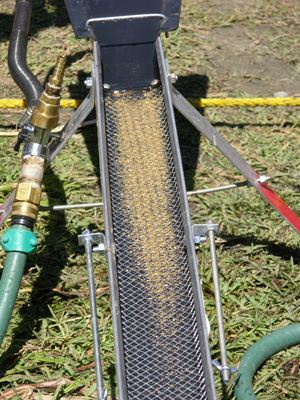 When he got there, he found it wasn’t quite that easy. “Here I am, and I don’t know how to do it, where to do it,
When he got there, he found it wasn’t quite that easy. “Here I am, and I don’t know how to do it, where to do it, 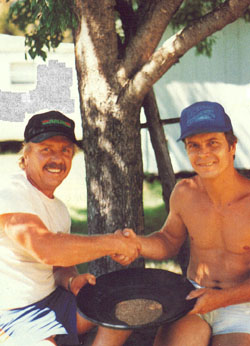
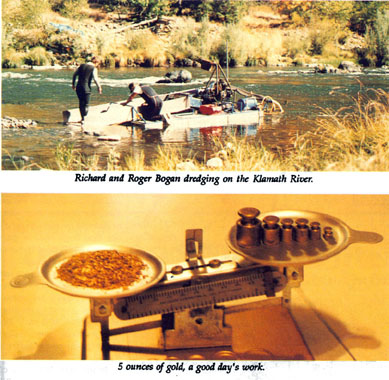
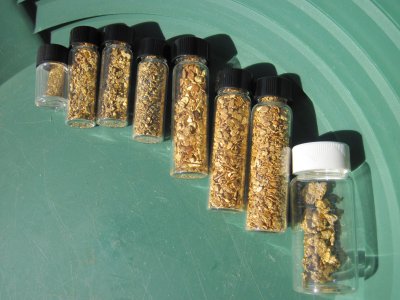 Well, here’s my total gold from
Well, here’s my total gold from 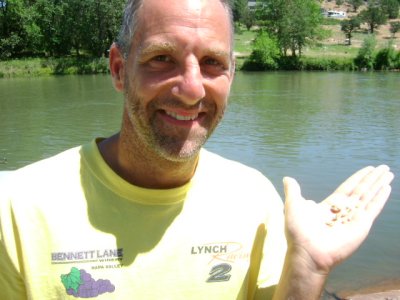

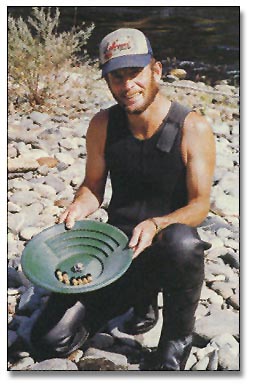 There was gold to be found, and without the type of hassles and problems that he’d encountered in the past, whenever he attempted to find a good place to dredge. Shortly thereafter he joined the club, and made plans to head up to Happy Camp early in the spring, taking his four-inch dredge along with him.
There was gold to be found, and without the type of hassles and problems that he’d encountered in the past, whenever he attempted to find a good place to dredge. Shortly thereafter he joined the club, and made plans to head up to Happy Camp early in the spring, taking his four-inch dredge along with him.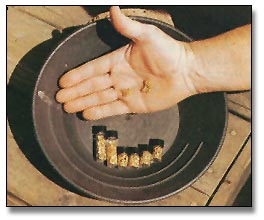 however, and that was one of the things he really liked about this group.
however, and that was one of the things he really liked about this group.


